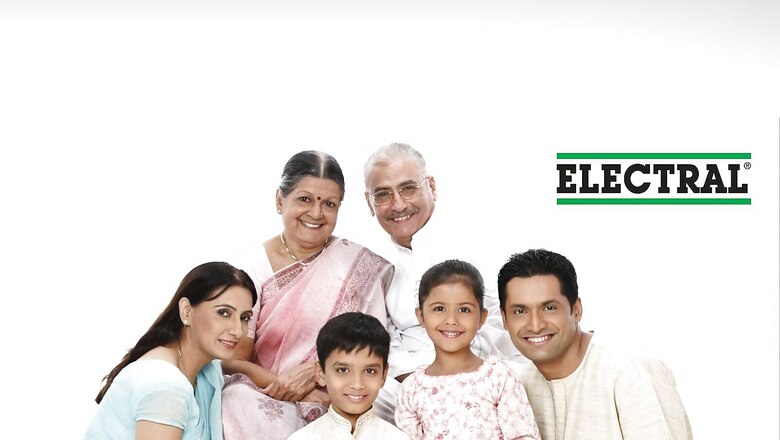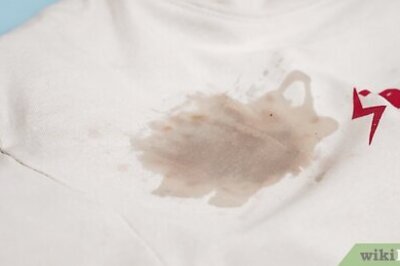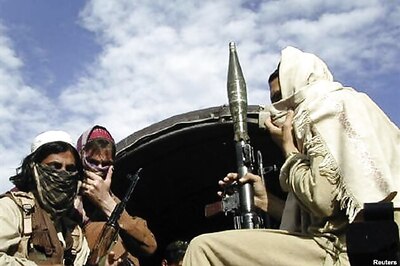
views
Monsoons bring along an unfortunate host of waterborne diseases, most of which involve diarrhoea and dehydration. Protecting your family at this time requires a strategy combining vigilance and preparation.
In the wake of a frightening disease like Covid-19, talking about dehydration feels a little… anticlimactic. Consider this though: each year, more than one lakh children under the age of 5 die of dehydration and related complications in India alone, and worldwide, the figure jumps to 7.6 Lakh children. The best part is that these deaths are almost entirely preventable.
According to the World Health Organisation (WHO), this mortality rate can be brought down to less than one per cent by simple interventions like effective and timely case management. In simple terms, this involves administering an Oral Rehydration Solution (ORS), while seeking medical attention for the underlying cause: diarrhoea, viral stomach infections, gastrointestinal infections, and of course, deadly diseases like cholera.
Of course, dehydration related complications aren’t limited to children. Older, vulnerable adults are also at risk, for the same reason – both these groups find it hard to recognise and communicate their symptoms; and because symptoms of dehydration are so commonplace, they are easy to miss, irrespective of how old one is.
Mild dehydration (1-3% body weight loss), for instance, presents as mild thirst and a dry mouth, something most of us fail to notice. If we continue to lose water (4-6% body weight loss), we begin to feel tired and lightheaded, and our lips begin to feel dry. At this time, if we urinate, we’d notice that our urine is bright yellow. If severely dehydrated (>6% body weight loss), we experience raging thirst, severe headaches, a fast heartbeat and fatigue. At this time, urine turns a brownish yellow. When we lose more than 10% of our body weight, we can lose consciousness, and are at a significant risk of death from dehydration.
Most of us never get past the 6% stage on an everyday basis as our thirst makes us drink water. But for infants, young children, and vulnerable elders, there are specific symptoms to watch for. Infants, for instance, have no way of signalling to you that they are dehydrated. One of the first things you can watch for though, is a dry diaper. If an infant hasn’t wet his diaper in over 6 hours, if his mouth feels dry, and if the eyes and soft spots on the skull appear slightly sunken, you need to administer fluids, and fast. For toddlers, dehydration shows up as fatigue and irritability, along with tearless crying. They appear listless, and their eyes, cheeks and soft spots feel sunken.
For elders in the family, the problem looks a little different. As we age, our body’s fluid reserve becomes smaller, and our thirst sense becomes less acute. Additionally, those elders who are suffering from chronic ailments are often on medication that can be diuretic (causes increased urination). Often, the disease itself can cause many of the symptoms of dehydration, making it harder to spot when one is actually dehydrated. Sometimes, the only reliable way to make sure that the elder is getting enough water, is to track their water intake.
For the rest of us, the danger comes from diseases like diarrhoea, which unfortunately, are very common during the monsoons because our penchant for street food can get us into real trouble at this time. Severe, acute diarrhoea that comes on suddenly and violently, can cause a tremendous loss of water and electrolytes in a short amount of time. If one has vomiting along with diarrhoea, we lose even more fluids and minerals.
High fevers are another common cause of dehydration. If you’ve been unlucky enough to have a combination of a fever, diarrhoea and vomiting, you really, really need to watch your intake of water and essential minerals, also known as electrolytes. Electrolytes are essential minerals, like sodium, calcium, and potassium, that help our bodies regulate chemical reactions, maintain the balance between fluids inside and outside our cells, and more. On a normal day, we lose electrolytes through our sweat and urine, and replace them through our diet. However, when dehydration has already set in, you need to replace these fluids and electrolytes fast.
This is where Oral Rehydration Solutions come in. ORS has reliably shown life-saving effects in conditions involving dehydration since it was discovered in the 1960s. WHO, through various studies over the years, has refined and perfected the formula for rehydration: the perfect ratio of salts, minerals and electrolytes our bodies need to recover from dehydration.
In India, this formulation has been available since 1972, in the form of the trusted Electral sachets we’ve all had in our family first aid kits. Electral is also available in Ready to Drink Tetrapak. Electral is synonymous with ORS, it has been a backpocket remedy for anyone suffering from dehydration due to diarrhoea.
Maintaining your family’s health is often a matter of taking preventive measures, and being prepared for when things go wrong. When it comes to Dehydration you already have your first line of defense in your pocket. Your trusted sachet of Electral!
This is a Partnered Post.
Year or month
Read all the Latest News, Breaking News, watch Top Videos and Live TV here.



















Comments
0 comment